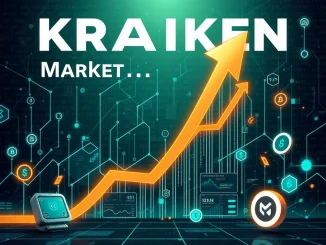
In a significant move highlighting the increasing focus on digital assets within legal frameworks, the Korea Deposit Insurance Corporation (KDIC) has initiated a major effort in Korea crypto recovery. The agency has identified and is now pursuing hidden cryptocurrency assets belonging to hundreds of individuals facing financial insolvency. This action signals a growing trend among regulatory bodies worldwide to address the complexities of digital wealth in bankruptcy and debt recovery proceedings.
The KDIC’s Bold Move in Korea Crypto Recovery
The Korea Deposit Insurance Corporation (KDIC) is stepping up its game. They’ve pinpointed cryptocurrencies linked to approximately 330 individuals who are currently navigating financial insolvency. Think of it as finding digital treasure chests that were previously hidden away. The goal? To recover these assets and use them to settle debts or manage bankruptcy estates.
This isn’t just a small-scale operation. Identifying assets across 330 different cases requires significant investigative work. It shows that authorities are getting more sophisticated in tracking digital wealth, which is crucial as more people hold value in cryptocurrencies.
How KDIC Crypto Recovery Works
So, how exactly is the KDIC crypto recovery process unfolding? The agency is implementing practical steps to make asset recovery more efficient:
- Setting Up Corporate Accounts: KDIC plans to establish corporate accounts at various crypto exchanges and partner banks. These accounts will be in the names of the bankruptcy estates, providing a legal and organized way to hold and manage the recovered digital assets.
- Partnering with Exchanges and Banks: Collaboration with financial institutions is key. This allows KDIC to navigate the technical and regulatory aspects of accessing and transferring cryptocurrencies from identified individuals.
- Streamlining the Process: By setting up dedicated channels this month, KDIC aims to expedite the process, moving from identification to actual recovery much faster.
This systematic approach is designed to overcome some of the traditional hurdles associated with recovering digital assets, such as verifying ownership and ensuring secure transfer.
Targeting Insolvency Crypto Assets: Expanding the Net
The KDIC isn’t stopping at just common cryptocurrencies. Their investigation into insolvency crypto assets is set to expand this year. What does this mean?
They will be casting a wider net to include a broader range of digital assets. This specifically mentions security tokens, which are increasingly used for fractional investments in real-world assets like real estate or art. Including these more complex digital instruments shows a commitment to comprehensive asset recovery in the digital age.
Expanding the scope is essential because individuals attempting to conceal assets might move them into less obvious or newer forms of digital wealth. By adapting its methods, KDIC aims to stay ahead of such tactics.
The Challenge of Hidden Crypto Assets
One of the primary challenges in asset recovery, especially in cases of insolvency, is the deliberate concealment of wealth. Individuals might try to hide funds in various ways, and digital assets, particularly cryptocurrencies, can be perceived as easier to hide due to their decentralized nature and pseudonymous aspects.
The KDIC’s actions are directly aimed at curbing the concealment of hidden crypto assets by insolvent parties. By actively searching for these assets and developing robust recovery mechanisms, they send a clear message that attempting to hide digital wealth from creditors or legal processes will not be successful.
This effort not only helps in specific insolvency cases but also strengthens the integrity of the financial system by ensuring that assets are accounted for, regardless of their form.
Broader Implications for South Korea Crypto News
This development is significant within the broader context of South Korea crypto news. The country has a vibrant crypto market and has been working on establishing clearer regulatory frameworks for digital assets.
KDIC’s proactive stance in asset recovery demonstrates that regulatory bodies are integrating digital assets into existing legal and financial processes. It highlights that holding crypto does not exempt individuals from financial obligations or legal scrutiny during insolvency.
This could set a precedent for how similar cases are handled in the future and encourages greater transparency among digital asset holders, particularly those facing financial difficulties.
Summary: A New Era of Digital Asset Accountability
The Korea Deposit Insurance Corporation’s initiative to identify and recover hidden crypto assets from 330 insolvent individuals marks a pivotal moment. By establishing corporate accounts, partnering with exchanges, and expanding their investigation to include assets like security tokens, KDIC is actively adapting to the digital landscape. This determined effort to curb the concealment of digital wealth underscores the increasing accountability for cryptocurrency holdings within legal and financial systems, sending a strong signal across South Korea’s crypto scene and potentially influencing approaches worldwide.



